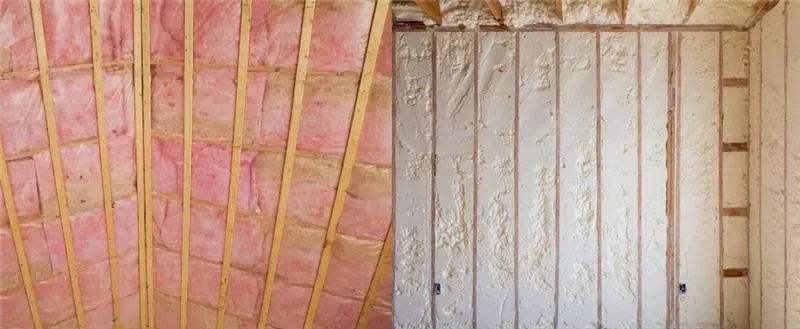
If you live in Burien, you know how much of a difference a well-insulated home can make—especially when it’s pouring outside or freezing in the early mornings. But when it’s time to upgrade or install new insulation, most homeowners are faced with a familiar question:
Do I go with spray foam or stick to traditional options like fiberglass or cellulose?
The answer isn’t one-size-fits-all. But if you’re looking for comfort, lower utility bills, and long-term performance, it’s worth understanding what sets these materials apart—especially in a damp, chilly climate like ours.
Let’s be honest: Burien’s weather isn’t always kind to homes. Between the constant rain, damp crawlspaces, and cool winters, moisture builds up fast. And in homes with older insulation, that often means mold, drafts, and uncomfortable rooms that never seem to stay warm.
This is where the type of insulation you choose can make all the difference. Some materials absorb moisture, lose their shape, and become nearly useless over time. Others—like spray foam—create a solid barrier that keeps your home dry, warm, and energy-efficient.
Spray foam isn’t your average fluffy pink stuff. It’s a liquid that expands into thick foam when applied, filling every crack, seam, and gap in your walls, attic, or crawlspace.
There are two main kinds:
Closed-cell is the go-to choice in places like Burien where moisture is an issue. It creates a tight seal and adds structural strength, which is great for older homes.
You’ve probably seen rolls of fiberglass or loose cellulose insulation in hardware stores. These materials have been around for decades, and while they work to a degree, they come with limitations:
If your attic smells musty or your crawlspace feels damp, chances are your current insulation isn’t doing its job anymore.
| Feature | Spray Foam Insulation | Traditional Insulation |
|---|---|---|
| R-Value (Insulating Power) | Higher (R6–R7 per inch) | Lower (R2–R4 per inch) |
| Moisture Protection | Yes (closed-cell resists water) | No (can absorb moisture) |
| Air Sealing | Seals every gap | Leaves cracks and leaks |
| Lifespan | 25+ years | 10–15 years (or less) |
| Mold Resistance | Excellent | Poor |
| Upfront Cost | Higher | Lower |
| Energy Savings | Long-term, consistent | Limited |
Spray foam isn’t cheap—we won’t sugarcoat it. But it’s a one-time investment that pays off month after month.
Homeowners who make the switch often see:
💡 “The average home loses up to 30% of its heating through poorly insulated walls and attics. Spray foam seals that loss.”
One of the biggest advantages of spray foam is how well it handles moisture. That’s especially important in the Pacific Northwest.
Traditional insulation absorbs water, and once that happens, it compresses, molds, and stops insulating altogether.
Spray foam—especially closed-cell—blocks moisture from entering in the first place. It keeps your walls dry, your wood framing intact, and your indoor air healthier.
Most of our customers notice the difference within the first week.
Rooms stay warmer in winter and cooler in summer. The air feels cleaner. There are fewer cold floors and no more “mystery drafts.” And for allergy sufferers, blocking out dust and pollen is a game-changer.
It’s not just about comfort—it’s about peace of mind.
If you answered yes to any of these, it might be time to rethink what’s in your walls.
Anytime you’re remodeling, replacing siding, or dealing with a drafty home is a great time to consider upgrading your insulation. But even without major renovations, you can still improve performance by:
Even small changes can make a noticeable difference.
At Cascadia Spray Foam, we’ve worked with families across Burien who were tired of wasting money on energy bills. Our team knows the ins and outs of local homes—from old craftsman bungalows to newer builds.
We use high-quality materials, take the time to seal every inch properly, and don’t leave until the job is done right.
📞 Call us at (425) 386-3500
📧 Or email: [email protected]
Insulation isn’t exciting, but it’s one of the smartest home upgrades you can make. Especially in a place like Burien, where every bit of heat and energy matters.
Choosing spray foam means fewer headaches, lower bills, and a cozier home—all year long.
Ready to feel the difference? Get your free quote today and talk with someone who knows what your home really needs.
Is spray foam safe for homes with wood frames?
Yes. It’s actually great for wood-framed homes because it helps prevent moisture damage and adds strength to the structure.
How long does spray foam last?
Most spray foam insulation lasts 25 to 30 years, with minimal maintenance.
Can it help with allergies or asthma?
Definitely. By sealing off outdoor air and moisture, it helps reduce mold spores, pollen, and dust from getting inside.
Will it lower my utility bills?
In almost every case, yes. Most homeowners see a 20–40% drop in heating and cooling costs after installation.
What areas benefit most from spray foam?
Attics, crawlspaces, and basement walls tend to give the biggest energy improvements. But even smaller jobs like rim joists can make a noticeable difference.